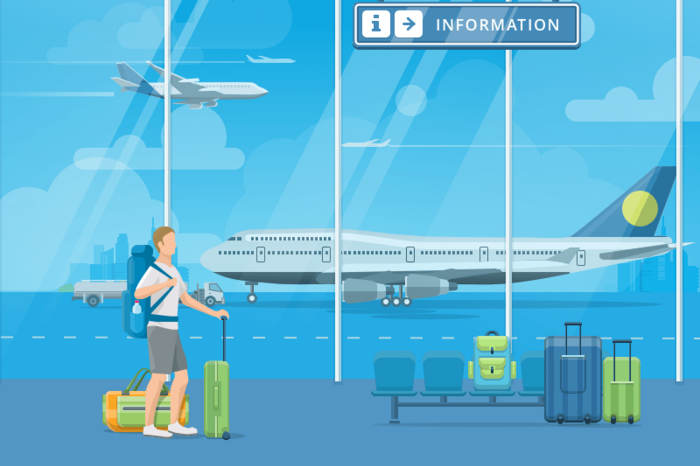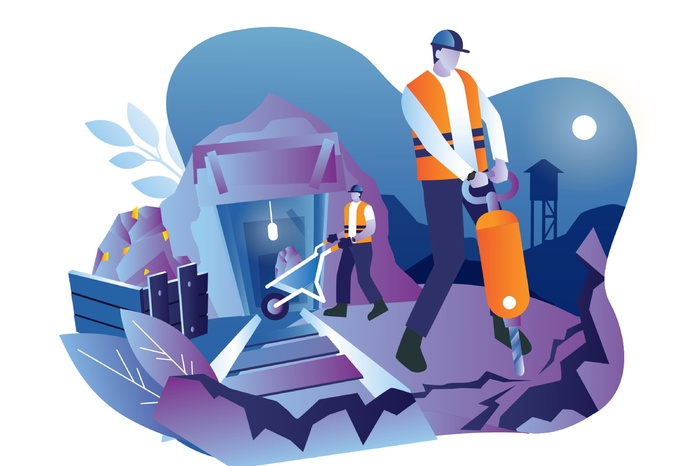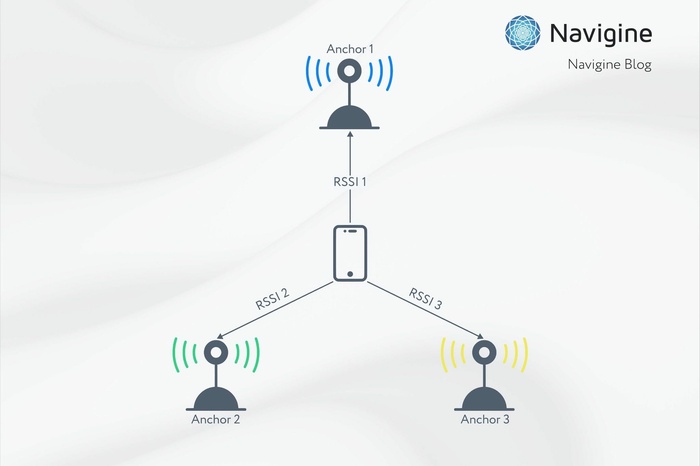Thanks to its profitability, convenience, and high robustness, iBeacon navigation is one of the most common methods of indoor positioning. The key moment of its realization is the correct installation of Bluetooth beacons for indoor positioning, which can ensure efficiency for many years. It may seem a simple task but the success of an ongoing project largely depends on a sound approach to infrastructure arrangement. Thus, before deciding on using any system, it is necessary to evaluate carefully an enterprise’s potential and build a strategy for implementing the technology.
What should be considered for the successful realization of the system?
The planning stage has to begin with considering some important moments that will help you to get useful information and take the right decision:
- Defining your needs. Decide for yourself which data you want to gather. Do you need the information to evaluate the efficiency of assets using staff planning or creating routes around the building? It will be useful to define specific needs and discuss them with the supplier of the solution.
- Defining your target audience. Find out which audience the system is designed for. It will help not only to select the right strategy but also to adjust advertising effectively.
- Defining the positioning technology. Choose the most suitable positioning technology. It can be UWB, BLE, or Wi-Fi but the most optimal solution is indoor navigation using Bluetooth.
- Defining location. How big are your premises? Which rooms have to be used while implementing the positioning system? Do you want to cover only interior spaces or open spaces as well? The given factors help to define the amount of equipment needed and the volume of future costs.
- The necessity of integration and additional functions. Analyze what other functions you would like to use after implementing the system. For example, the solution can be integrated with the ERP systems. It’s worth discussing this moment with the supplier and defining which compatibilities you may need.
- Defining a possible budget for the system. Clarify not only the starting costs of the installation but also the size of license fees, the cost of implementing additional infrastructure for expanded apps. Calculate short-term and long-term expenses.
- Search for the company that will realize the technological solution. Select the company that will ensure effectively and quality implementation of the technology into the infrastructure of your enterprise. We suggest choosing the company specializing in the iBeacon technology.
Why is it really important to choose the right strategy for beacon deployment?
At present, two types of infrastructure arrangement are selected according to the objectives – point-based and grid-based deployment. Let’s consider both of them.
Point-based deployment
This type of deployment requires assembling Bluetooth beacons in the places where the company is going to interact with visitors or clients.
Displaying advertisements or information on the occupancy are bright use cases of applying such an approach. Beacons can be placed on exhibits in museums, racks with goods, exits or entrances, and other objects in the building. The square of the object is important while calculating how many beacons you may need.
Grid-based deployment
The given type of beacon arrangement is appropriate when a big place has to be covered. For instance, if the company is seeking a solution for positioning, navigating, and analyzing data. The main principle of grid deployment presupposes the coverage of a certain area with at least some beacons. In this case, the user’s location is defined by the mobile application using trilateration. The size of the building, the presence of obstacles for signal propagation, and their number can significantly influence the exact number of beacons you will need.
While using grid deployment, it is necessary to make sure that each place in the area is reached by the signals from three beacons, or it will be impossible to detect the user’s location with maximum accuracy. For example, three beacons are enough for a hall of 20-25 m long. If a room is 2,500 sq.m, you will need about 30 beacons. It is advisable to set a lower signal transmission capacity and raise the density of beacons to create a more complicated and dense network with higher positioning accuracy.
Beacon deployment tips
To arrange beacons in the most effective way, we recommend using the following tips:
- At first, you have to calculate the money needed for the deployment. Ordering redundant equipment leads to unnecessary costs for your company and the deployment of more than necessary beacons will result in system failure. At the same time, lack of coverage can also cause incorrect results, thus, infrastructure planning should be paid much attention to.
- For arranging beacons inside the place, you can’t do without the permission and identifiers for all the engineers at the site. You’d better receive approval from the enterprise management long before the deployment itself to avoid any potential problems with security. Moreover, you should fulfill the occupational health and safety requirements. Don’t forget about protective vests and headpieces, comfortable shoes, reliable ladders for assembling beacons at a height.
- If you assemble beacons on the walls inside the building, carefully consider their location and place them in sight of mobile devices. Don’t place beacons on something that can potentially block their signals. Make sure there is about 8-10 m space between beacons. Do not assemble them too high on the wall, 3-4 m is the optimal height.
- Choose the installation arrangement depending on the type of the building. Pay attention to the type of object. Large spaces (exhibition halls or shopping malls) often may need additional and fine adjustment. It’s much easier to work in places with clearly delineated routes (for example, hospitals or office buildings).
- Avoid signal interference. While installing beacons, it’s really important not to use some objects (microwaves, badly shielded cables, etc.) and materials (such as metal or concrete) that can result in Bluetooth signal interruption.
- For better fixation, the surface for assembling beacons has to be clean – don’t forget to check it beforehand. Dust or dirt on the wall will not let beacons attach properly or they can easily fall off, which will fail the system. Just clean the place before assembling beacons and use quality sealing tape.
- As a rule, beacon accumulators run for about three years. Depending on the industry and use cases, the number of installed beacons can vary from 50 for small rooms to 1500 for spacious exhibition halls. Getting timely information about the necessity to replace a battery can be a good idea while having a large number of devices. To avoid the situation when too many beacons can fail simultaneously, it’s necessary to constantly track their work and detect empty batteries to take appropriate measures. Indoor location iBeacon technology allows integrating into the system the beacon management function that helps to monitor their work. It helps to control the state of the battery and define the location of some certain device, which significantly simplifies servicing.
- Communication is a key moment of success. Successful implementation of iBeacon simplifies and enhances communication. Regular consultations, meetings, and feedback inside the company as well as outside the company, are important for keeping all the participants of the project informed and for avoiding any possible unpleasant moments while implementing the system.
Navigine specializes in implementing the iBeacon technology and successfully develops navigation with Bluetooth systems for various industries. We are ready to provide quality precision tools for defining a location in buildings, as well as assist in choosing professional contractors for assembling hardware (beacons, gateways, etc.).



